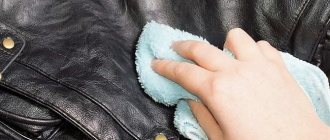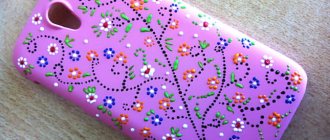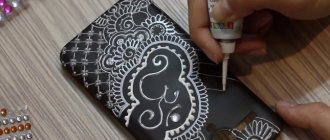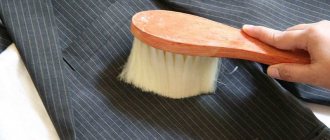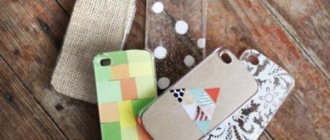The trick of fashionable matte silicone cases is the complete absence of gloss and dense, uniform coloring. Apart from their original appearance, in all other respects they are as soft and practical as transparent ones. The material is just as porous and also gets dirty - it can absorb dirt that is not easy to wash off.
If you have a difficult stain, getting rid of it using overly aggressive or abrasive means, you can overdo it and scrub it off along with the paint. We asked our technologists how to clean a matte case from spot stains and want to share their answers with you.
Matte silicone cases for iPhone 7 and iPhone X (10) without print
Chlorine bleach
Also used for white cases. Use only in diluted form according to the instructions on the label. Put on rubber gloves, soak a cotton pad in the solution and wipe the case from the edges to the center. If necessary, walk over the stain and rub it several times, but without fanaticism.
When used on colored or printed areas, the colors may become discolored to a greater or lesser extent.
Red matte silicone case with print and black “Magic Cat”
How to clean a matte phone case
Source: Unsplash (@elsitiomobile)
The matte case does not have a glossy sheen and is pleasant to the touch. The surface of such a case is porous and gets dirty quite quickly, so you need to care for it more carefully than a simple plastic one.
Special products for difficult stains
If there are traces of a fountain pen, marker, coffee, juice or red wine and other complex traces on the matte case, then it is better to use special tools that are created specifically for these purposes and will cope with the task faster than improvised means. But if there are no special equipment nearby or there is no time to go for them, then folk life hacks will also work.
Do not miss
- Do not miss
How to descale a kettle: 9 ways to remove plaque at home (video)
Eraser
An eraser will do a good job of removing fresh marks from pens, pencils and paints. The eraser will not harm matte silicone cases, including “anti-slip” cases with Soft Touch coating.
Soap solution
Source: Unsplash (@isaacquesada)
If we are talking about a stubborn stain or a yellowed cover, then you can restore it using a soap or powder solution.
What should be done:
- dilute liquid soap or a couple of teaspoons of washing powder in a small container. Shampoo will also work;
- soak a cotton swab or disk in the resulting solution;
- Wipe the cover with it until the yellowness and stain begin to disappear.
You can leave the soap solution to soak for 2-3 minutes so that it penetrates deeper into the dirt. Afterwards, rinse the cover under running water and wipe dry.
Toothpaste
Source: Unsplash (@shali)
Toothpaste is more aggressive than soap solution. Therefore, first test its effect on a small area of the case. Once you are sure that everything is in order, start washing off the dirt.
What should be done:
- Wet the cover with warm water. Do not immerse it completely in water, only those places where there is dirt;
- squeeze toothpaste onto a cotton swab and treat contaminated areas;
- Leave the paste on the case for about 10 minutes and then wash it off.
If the stain doesn't come off the first time, repeat. Whitening toothpastes are suitable for white cases.
Chlorine bleach (white covers only)
This method can ruin colored cases - it will erase the design or leave a white mark on a plain surface. Carry out cleaning only with rubber gloves to avoid damaging the skin of your hands.
What should be done:
- dilute the bleach in water according to the instructions on the label;
- soak a cotton pad in the solution and wipe the case with it. Move from the edges to the center.
- It is better to rub the stain several times with light pressure than once, but with force.
Soda
View this post on Instagram
Post by Baking Soda (@etosoda)
Not a single selection for cleaning anything is complete without baking soda. So if you don't know how to clean something, try using baking soda. You really can't go wrong.
What should be done:
- dilute baking soda in water to make a thick paste;
- apply to a cover that has been previously moistened in the area of contamination and let dry;
- then rinse with water and wipe dry. Repeat if necessary.
Important! To avoid damaging the colored case or scratching the transparent one, act carefully. Namely, do not rub in soda.
Lemon juice and vinegar
Everything is simple here. You need to soak a cotton pad in lemon juice or vinegar, and then wipe the stain with it. Then rinse the case under running water and dry.
Vegetable and Vaseline oil
Vegetable oil and petroleum jelly are used when cleaning various surfaces because they dissolve dirt well. All you have to do is leave them to soak into the stain for a couple of minutes.
What should be done:
- soak a cotton pad in any of these oils
- wipe the stain with it and leave it to soak in for 2-3 minutes;
- then rinse and dry.
In this way you can erase stains from felt-tip pens, paints, stationery pastes and even glue. Only in the latter case the oil will have to be left to soak for about an hour.
Antiseptics
For minor contamination, alcohol-free antiseptics are suitable - for example, chlorhexidine or 3% hydrogen peroxide. Apply with a cotton pad without prior dilution with water.
Chemical solvents - such as white spirit, etc. - are highly likely to erase paint or print from a matte silicone case, so we do not recommend using them.
Colorful matte silicone case with Indian Panda print
Alcohol: destruction of fastening components
The surfaces of various objects and planes, including various external parts of the machine, can also be tidied up using a solvent such as alcohol, which successfully copes with a wide range of adhesive joints.
The effect of alcohol is expressed by the fact that the components of the glue dissolve to such a state that they stop sticking to surfaces.
If alcohol is applied directly to the area where something has been stuck, you can see impressive results within a few minutes.
If the structure of the glue is one of the alcohol-soluble products, you can see how it begins to soften. You can remove the sticker in the same way.
The final stage in any of the presented situations is to remove residues and rinse the item.
Removing dirt stains from a phone case
To remove dirt stains, the same method is used for many materials. The surface must be wiped with a damp cloth (sponge) soaked in a soap solution. How can you wash a leather smartphone case? Both liquid soap and dishwashing detergent will do. Do not use strong chemicals (bleaches, powders) - they can not only damage the texture of the case, but also ruin its color.
Smooth cases made of natural and artificial leather can be easily cleaned with a damp sponge. However, do not forget that light-colored accessories are more difficult to clean than dark-colored cases.
Means for cleaning dirty areas
Operational approach
The generally accepted universal solvent is ordinary water. It allows you to wash any place stained with glue or other water-based adhesive. The list of products susceptible to water includes the following types of glue:
- clerical;
- latex;
- PVA;
- vegetable;
- carpentry
The manufacturing principle for all these subtypes is the same: a mixture of water and an adhesive intended for gluing an object to any type of surface. After the applied bonding liquid has completely dried, the adhesive bonds to objects, including machine surfaces.
Removing the glue is quite easy if the glue has not yet completely dried. To do this, excess glue in the area where something was glued must be collected with a rag.
The area should then be thoroughly rinsed with water until all residue has been removed.
We clean cases made of polycarbonate, silicone, thermopolyurethane
Accessories made from these materials are best cleaned using special plastic care products. They not only clean the cases well, but also have antistatic properties, thanks to which dust will not stick to the case.
But if you don’t have a similar product at hand, you can clean the silicone case using the same sponge soaked in a soap solution. Just wipe the cover - dirt stains from such a surface should be cleaned quickly and easily.
A little about bleaching covers
Perhaps the most popular topic about cleaning accessories is how to bleach the yellowness of a case. The fact is that there are low quality silicone cases. Over time, this material loses its color. We will not reassure you, so we will inform you that, as a rule, such covers can no longer be bleached.
If you really want to have a white case, give preference to polycarbonate products. This material does not lose its color. You will just need to periodically wipe it from dirt stains. And at the same time, much more often than covers of other colors.
Don't forget to take care of protective accessories for your gadgets - and then they will take even better care of your devices!
Cases protect our devices day and night and take all the blows of fate. Our favorite gadgets remain neat, clean and intact. But do not forget that all the dirt remains on the cover, which needs to be cleaned from time to time if you want to keep it neat. Today RosCase will tell you how to clean your phone case.
You must first remove the case from the phone so that moisture does not get on the surface of the device. Before you start cleaning the case, you need to determine what stains you want to remove and what material your protective accessory is made of.
Covers are made of natural, artificial leather, polycarbonate, thermopolyurethane, silicone. The stains can be ordinary mud, old, or grease.
Pollution prevention
To protect the case for mobile equipment from contamination and extend its service life, you need to follow several rules:
- It is advisable to choose high-quality accessories, they will last longer;
- It is recommended to clean silicone cases monthly, plastic cases – once every 2 weeks;
- the longer you delay removing contaminants, the more difficult it will be to clean them;
- do not leave the phone on the table when writing or eating - this will protect the pad from the appearance of stubborn stains, and the device itself from damage;
- Do not leave silicone covers near open fires, heating appliances or in the sun. This contributes to cloudiness and the appearance of yellowness;
- Overheating of the gadget often leads to the same effect, so it is advisable to prevent the battery temperature from increasing;
- with frequent removal, the lining is deformed, stretched and, as a result, does not adhere well to the device, losing its protective properties;
- The white accessory absorbs the dye from the clothes it is in. Therefore, it is not recommended to put a phone with such a lining in the pockets of jeans or black clothes;
- choose a case that fits the phone in size and fits tightly to it.
Removing greasy stains from a case
The recipe for removing grease stains from leather covers is very simple: just mix potato starch with water until it forms a thick mass - and then apply this mixture to the stains. Leave the product on the case for 30 minutes and then rinse off with a sponge.
If you want to restore shine to your accessory, use glycerin. Apply it to a sponge or rag and walk over the surface of the case.
Removing a variety of stains
If you don’t know where this or that stain came from, we offer you a universal recipe for removing such stains from a leather case. Mix medical alcohol and turpentine in equal proportions. Wipe the stains with a sponge soaked in this solution. Leave the case with the applied mixture for 30 minutes. After this, moisten the sponge only in alcohol and wipe the surface of the case again.
Cleaning light leather cases
If you don’t know how to wash the white gadget case, we advise you to try the following recipe: ammonia, baking soda, water. Mix this in equal parts, apply it to the case with a sponge, and then leave for 15 minutes. At the end of the procedure, wipe the surface of the case with a damp microfiber cloth.
And to add shine, you can again use glycerin. It will also protect the accessory from moisture. Instead of glycerin, you can use castor oil. The liquid should be applied to a dry sponge and wipe the surface.
How to wash a silicone case from dirt and yellowness
A number of methods will have something in common with those that we advised to owners of matte phone cases. Therefore, in order not to repeat ourselves, we will not describe them. Instead, we will indicate the rules that must be followed if you want the silicone case to serve you for a long time.
Here they are:
- Under no circumstances wipe it with bleach or undiluted acetone and gasoline. This way you will definitely ruin the material. — Silicone should not be rubbed with sandpaper and other hard brushes, as well as abrasive powders. — Do not leave your phone in a silicone case in direct sunlight, near a battery or radiator. This will quickly turn yellow. — Take the device off your phone as little as possible. The more often you do this, the sooner it will stretch and become unusable.
Now to cleaning products that are only suitable for silicone cases.
1. Liquid soap
Source: Unsplash (@mnelen)
Prepare a soap solution, immerse the case in it and leave for 5-7 minutes. Then take an old toothbrush, first soften it with hot water, and with smooth movements begin to clean the dirt from the case.
Soda
Unlike processing a matte case, here you need to first wet the case in a soapy solution. Afterwards, also using a softened toothbrush, you need to rub soda into the still wet case. To avoid scratching the product, wash it as delicately as possible. Not three very much.
Do not miss
- Do not miss
How to wash white sneakers at home: 9 ways to whiten fabric, leather and clean soles (video)
3. Alcohol
Medical or industrial alcohol will help remove traces of a fountain pen, glue or tape. To do this, you just need to moisten a cotton pad in alcohol and wipe the contaminated areas. There is no need to rinse with water.
Nail polish remover
The processing principle is the same as with alcohol. Only in this case it is necessary to rinse the cover with running water and wipe dry.
Toothpaste
Toothpaste can be used not only to remove stains from the case, but also if you want to remove the yellowish coating from it in order to restore its original transparency. To do this, apply the paste in a thick layer on the case, gently rub it in with a softened toothbrush and leave for a few minutes.
After moistening the case, gently brush it again and thoroughly rinse off the paste under running water. Wipe down the case when finished.
What to do if the glue has dried
Removing dried superglue stains is not easy, but you have to try. First, you can use a mechanical method - scrape off the dried glue with a knife, try to cut it with a blade. It will not be possible to completely get rid of the stain using these methods; its remnants will still be noticeable. They can be removed from clothes by washing them manually or in a washing machine. Large drops of superglue can be broken with a hammer by placing the item on a solid base. Next, the crumbs must be separated, and the stained area must be immediately washed with soap and powder.
Exposure to oils
There are often situations when glue that has got on noticeable parts of clothing or other surfaces cannot be affected by water, alcohol, or even acetone.
In this case, it makes sense to turn to a product such as baby or vegetable oil.
Don’t be afraid to stain the item of clothing you are cleaning: the oil will perfectly dissolve even glue residues without harming the item itself. The effectiveness is due to the fact that many types of glue are characterized by an oil base, which makes it possible to clean certain types of contaminants.
After even the slightest trace of glue has been dissolved, you need to wash the treated area with soap and water.
The main feature of superglue
Superglue was created in the mid-20th century, when experiments were carried out to improve materials for optical sights. As a by-product of the work, the highly adhesive substance was immediately patented, because its properties were unique. Any superglue - Moment, Second, Second - contain one substance in the composition. It is cyanoacrylate, an ester of cyanoacrylic acid, a liquid monomer with the addition of plasticizers, activators, stabilizers and thickeners.
Cyanoacrylate quickly polymerizes under the influence of water, an alkaline environment, moisture from the air, etc. Therefore, erasing traces of superglue is not so easy: it quickly and firmly sticks to the material. The stain on things becomes hard and durable, and it is also very difficult to wipe the glue off your fingers. But, despite the glue setting in 10-60 seconds, the final strength gain occurs within several hours, so it is recommended to start getting rid of unsightly stains as early as possible.
Features of cleaning a silicone case
Caring for silicone should be soft and delicate. To avoid scratches and deformation of the material, do not use hard brushes and metal sponges, sandpaper, knives and other sharp objects, chlorinated detergents and aggressive chemicals.
Such compositions and objects can easily damage soft material, causing cracks, scratches, yellowing, and cloudy stains. Dirt easily gets into scratches and cracks, and yellowing will ruin the appearance of the product.
Products that may be useful when washing a silicone case:
- Toilet or liquid soap;
- Shampoo and various washing solutions with a mild composition;
- Liquid dishwashing detergent;
- Sunflower oil, essential oils;
- Soda;
- Soft bristle brush or foam sponge;
- Technical alcohol;
- Dry, clean, soft cloth or cloth.
Be sure to remove the case from your phone before washing. After washing, it is important to thoroughly wipe the products with a dry, clean cloth or soft cloth to avoid leaving streaks. Due to the formation of streaks, the silicone will gradually darken.
Do not dry silicone molds on radiators or electrical appliances! Do not remove stickers or adhesive stains with a knife, blade, scissors or other sharp object! You will only scratch the surface and ruin the appearance even more.
What chemicals will help clean
Traces of super glue should be wiped off before they have time to dry. Chemicals that help with this procedure:
- Anti-glue. The composition has a thick consistency, suitable for working with vertical surfaces. Do not use on painted or varnished surfaces.
- Dimexide. It has a liquid texture and removes super glue from cars and household appliances. Irritates the skin of the hands; you need to wear gloves.
- White Spirit. Organic solvent, dissolves paints and varnish.
- Alcohol. Used for mechanical stain removal, softens the texture of dirt.
Acetone: manicure product for other purposes
You can also remove glue from clothing or glass areas using acetone. To do this, a cotton swab is soaked in it, which is then placed on the surface with glue.
After some time, armed with a toothbrush, you can completely remove all residue. The steps must be repeated until the adhesive bonds existing between the glue and the material are dissolved and weakened.
In this way, a variety of types of glue can be removed from clothes and other objects, including such a variety as a product with the prefix “super”.



